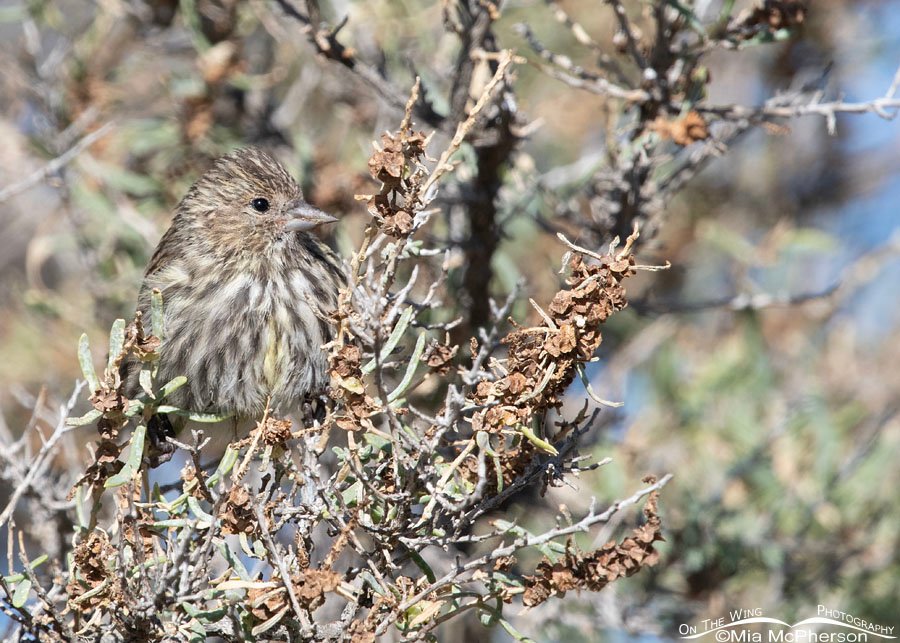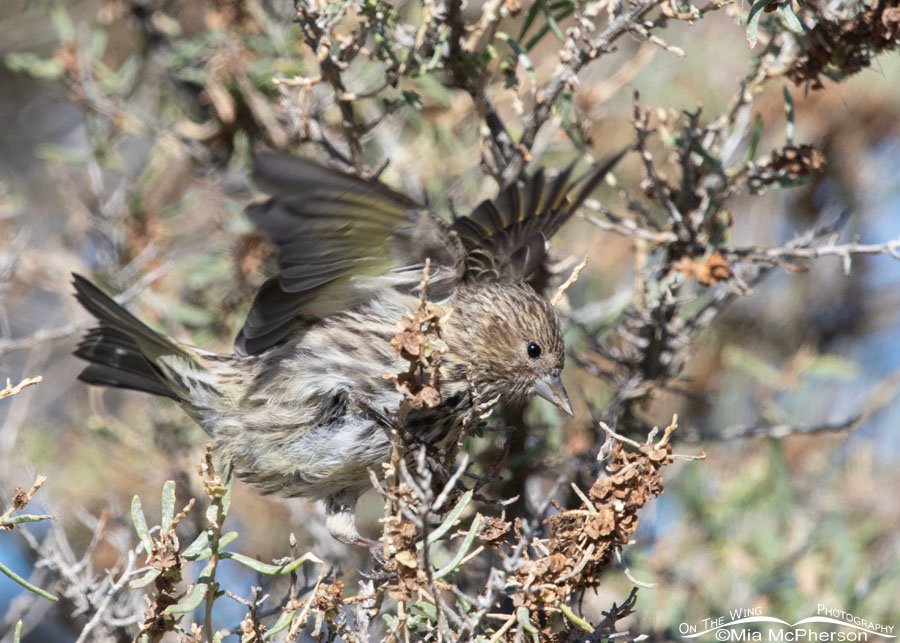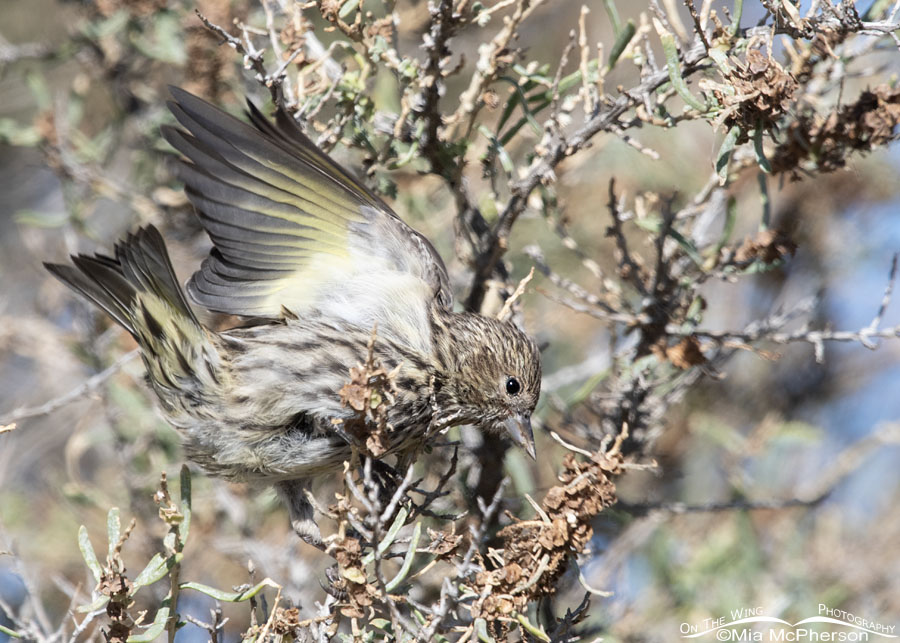I’m always happy to have a Pine Siskin in my viewfinder. When I saw this siskin five days ago in a Greasewood, I thought about how easily they can blend in.
 Nearly hidden Pine Siskin in autumn – Nikon D500, f8, 1/1600, ISO 640, Nikkor 500mm VR with 1.4x TC, natural light
Nearly hidden Pine Siskin in autumn – Nikon D500, f8, 1/1600, ISO 640, Nikkor 500mm VR with 1.4x TC, natural light
I also thought about how challenging it was in the past to point out siskins. Their streaky bodies and small size can make them hard to see in some habitats. More often than not, I hear Pine Siskins before I actually see them, which can aid me in locating them.
The siskin in these photos was silent, and in the autumn greasewood, it was nearly hidden from my view.
This photo was made possible by my 500mm lens and a 1.4x teleconverter. With just my naked eyes, the siskin was much harder for even me to see.
 Pine Siskin fluttering their wings – Nikon D500, f8, 1/1600, ISO 640, Nikkor 500mm VR with 1.4x TC, natural light
Pine Siskin fluttering their wings – Nikon D500, f8, 1/1600, ISO 640, Nikkor 500mm VR with 1.4x TC, natural light
I stayed focused on the Pine Siskin as she or he moved higher on the greasewood to feed on the seeds. I was tickled when the siskin fluttered its wings and the my photos showed the yellow on the underside of her or his wings. That is a feature I don’t see all that often with this species.
 Pine Siskin in a greasewood in fall – Nikon D500, f8, 1/1600, ISO 640, Nikkor 500mm VR with 1.4x TC, natural light
Pine Siskin in a greasewood in fall – Nikon D500, f8, 1/1600, ISO 640, Nikkor 500mm VR with 1.4x TC, natural light
As I photographed this Pine Siskin, I wondered if this will be an irruption year for these nomadic members of the finch family. Maybe I will see more siskins this fall and into the winter, perhaps even in large numbers. I know that I will be looking for them!
Life is good.
Mia
Click here to see more of my Pine Siskin photos plus facts and information about this species.


I am not in the slightest surprised that people have trouble spotting them. That camouflague is excellent. Love the additional colour that the wing flap revealed.
Good eye, Mia! What a lovely little bird. I’m especially enjoying the “surprise” pop of yellow — I never would have known.